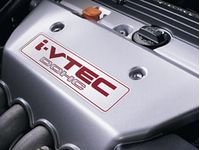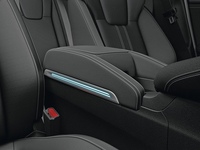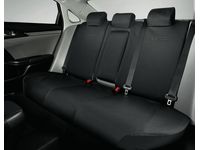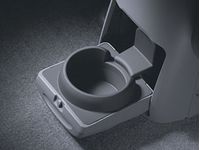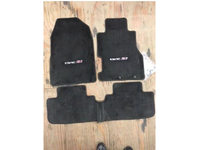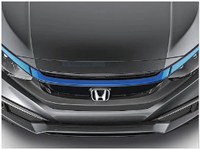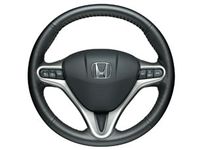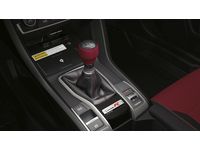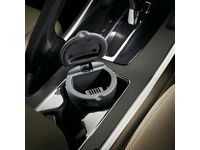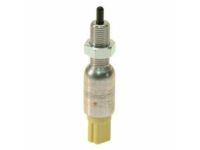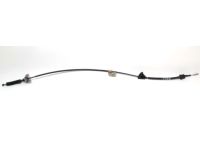- Hello
- Login or Register
- Quick Links
- Live Chat
- Track Order
- Parts Availability
- RMA
- Help Center
- Contact Us
- Shop for
- Honda Parts
- Honda Accessories

Why choose HondaPartsNow
- Unbeatable Prices
HondaPartsNow.com is your prime online source for discounted prices. We offer high-quality options for your vehicle that can't be found anywhere else. HondaPartsNow.com offers genuine parts at discounted prices, allowing you to keep your vehicle running at its peak without straining your budget.
- Dedicated Service
HondaPartsNow.com ranks second to none in devoted customer service. We strive to exceed the customer's expectations and build relationships with the customers. We are always ready to assist you with any inquiry or detail about your vehicle's parts and accessories.
- Rapid Delivery
HondaPartsNow.com is devoted to combining genuine Honda Civic parts and accessories with fast and affordable shipping. Most items listed in our catalog are in stock and are shipped out promptly after the order has been successfully processed. This guarantees you receive the parts your vehicle needs without needing to leave your home in just a matter of days.
Popular Genuine Honda Civic Parts
- Electrical / Exhaust / Heater / Fuel Parts View More >
- Chassis Parts View More >
- Engine Parts View More >
- Interior / Bumper Parts View More >
- Body / Air Conditioning Parts View More >
- Accessories View More >
Shop Genuine Honda Civic Parts with HondaPartsNow.com
The Honda Civic is classified as a small vehicle. The first-generation Honda Civic was launched in July 1972 as a two-door coupe. Honda introduced the N360 small car to the Japanese market in the 1967 model year and had a front-mounted engine on a transverse axle and front-wheel drive. It was Honda's first export model. It became one of the most influential car models of the 1970s. The second-generation Honda Civic was launched in June 1979 for the 1980 model year and was larger and edgier. The third generation was launched in September 1983 for the 1984 model year and was a smaller and lighter two-seat coupe. The third-generation Honda Civic introduced the familiar four-cylinder engines. Highway fuel economy was approximately 28 mpg. Honda continued the sporty tradition of the original SiR. The fifth generation remained popular with tuners and racers. In the United States, the Honda Civic was sold from 1996 through 2000 as the CX, DX, EX, EXR, HX and LX. All base models had a four-cylinder engine. The seventh generation was introduced in September 2000 for the 2001 model year. Although the design retained the exterior dimensions of the previous generation model, interior space was increased, including a flat rear floor.The ninth-generation sedan and coupe entered production in the United States on April 20, 2011.
Even the renowned durability and precision engineering of Japanese automakers can't entirely shield the Honda Civic from the inevitabilities of wear and tear, with transmission failure and cracked engine blocks being two key issues. A number of Civic drivers, particularly those with 2001 and 2002 models, have reported transmission difficulties including problematic shifting, clutch slippage, misaligned gear indicators, and grinding noises, suggesting checks on the transfer case seal, automatic transmission filter, and clutch disc. Another common issue is a cracked engine block, characterized by steam from under the hood, coolant leaks, rough engine running, power and acceleration loss, hard or impossible starting, with the Check Engine and Low Coolant lights being further indicators. If these symptoms occur, inspect the water pump, radiator hose, valve cover gasket, and air filter. Maintenance of the Civic also requires attention to more vulnerable parts such as the wiper blades, which due to their rubber material and exposure to harsh conditions, should ideally be replaced every six months. Regular upkeep of other components like the cabin air filter, emblem, headlight, and fog light also contributes to the car's optimal performance.
Opting for OEM items can result in long-term savings on upkeep and repairs, as they provide the utmost durability due to their stringent manufacturing procedures. For all your needs related to OEM Honda Civic parts, such as Transmission - Automatic, Transmission - Manual, look no further. Our extensive selection of genuine Honda Civic parts, competitively priced, is designed to satisfy all requirements. Upheld by the manufacturer's warranty, our parts offer superior quality, reliability, and durability. Plus, our prompt delivery service and hassle-free return policy further enhance your shopping experience.
Honda Civic Parts Questions & Answers
- Q: How to remove and adjust a Clutch Switch on Honda Civic?A: Unplug the switch electrical connector. Then, loosen the locknut and unscrew the switch from the clutch pedal bracket. Installation is simply the reverse of removal. To adjust the switch, you need to loosen the locknut and turn the switch in or out, as necessary. This will provide continuity through the switch when the clutch pedal is depressed.
- Q: How to remove the Shift Cables on a Honda Civic?A: Remove the center console. Remove the cotter pins and detach the cable ends from the lock pins on the shift lever. Remove the four bolts and remove the shift lever assembly. Pry off the spring clips and detach the cables from the shift lever housing. Rotate the cables until the squared edge aligns with the slot in the shift lever housing cutout. Remove the air filter housing and intake tube. Disconnect any harness clips or connectors to allow access to the shift cables at the transaxle. Remove the clip(s) and washer(s)and detach the cable(s) from the shift lever(s) on the transaxle. Pry off the spring clip(s) and detach the cable(s) from the bracket on the transaxle. Raise the front of the vehicle and support it securely on jackstands. Working under the vehicle, remove the heat shield attached to the vehicle's body. On Civic 2.4L engines, the catalytic converter and pipe must be removed before the heat shield can be removed. Remove the cable bracket fasteners from under the vehicle. Remove the rubber grommet where the cables pass through the vehicle body. Guide the cable(s) through the floorpan and remove from under the vehicle. Installation is the reverse of removal.















































